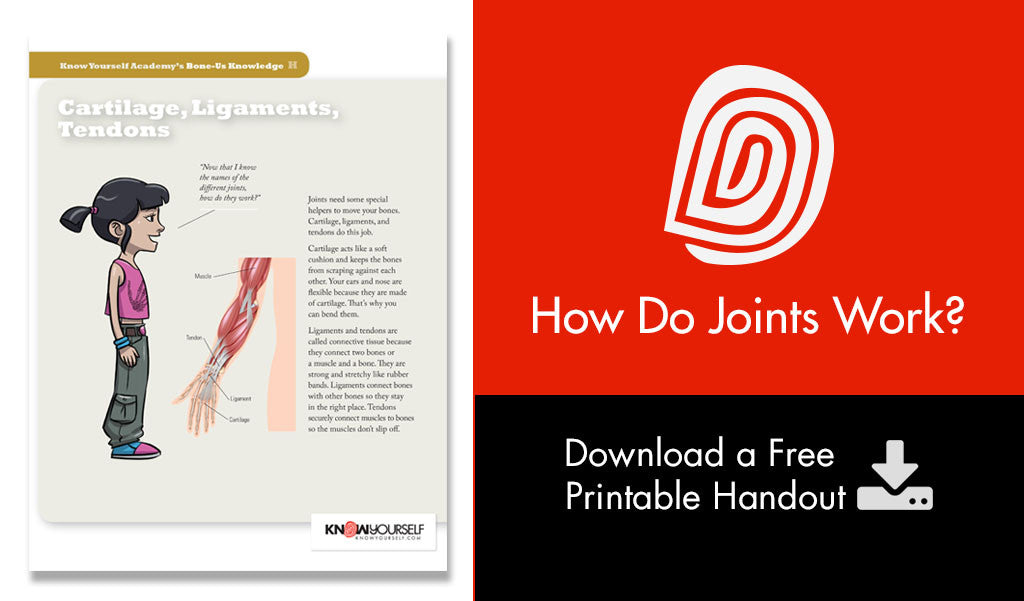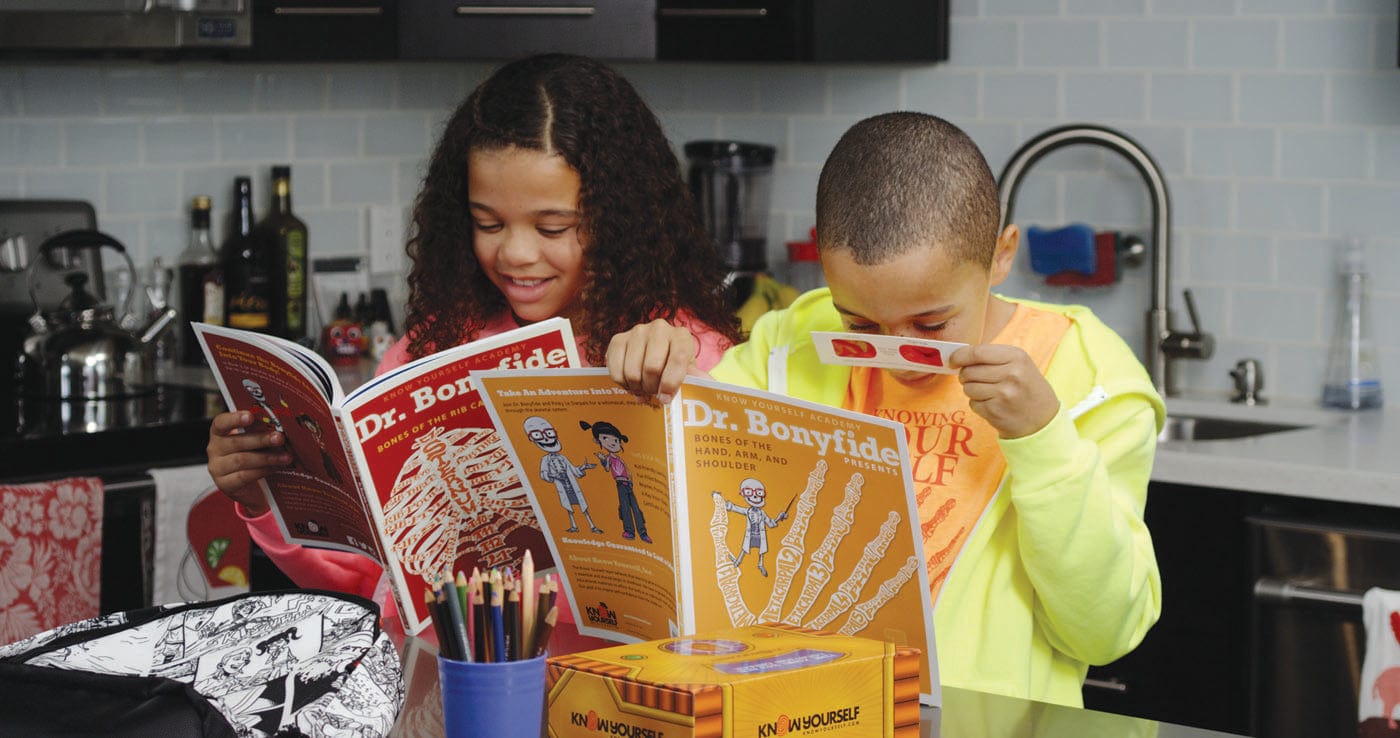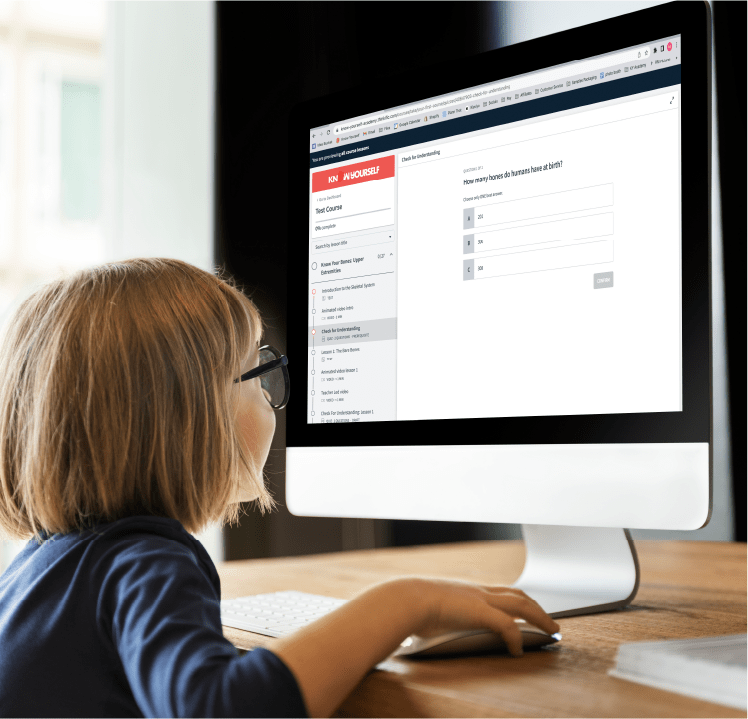
This week is Bone & Joint Action Week, a public education program spearheaded by the United States Bone and Joint Initiative.
Protecting your bones and your joints is a great cause, so let’s learn a bit about how they work. We’ve taken a page from Dr. Bonyfide Presents Book 1: Bones of the Hand, Arm, and Shoulder and made it available to download. On pages 100-102, Pinky discovers the different types of joints in the body (ellipsoidal, hinge, ball-and-socket, pivot, saddle, and plane) and how to see them in action. Now comes the big question: How do joints work?
Get an introduction to cartilage, ligaments, and tendons with Pinky in this image, or download it as a PDF for use as a printable handout.
Know Yourself Academy: Cartilage, Ligaments, and Tendons
How Do Joints Work from Book 1 Bones of the Hand, Arm, and Shoulder
Joints need some special helpers to move your bones. Cartilage, ligaments, and tendons do the job.
Cartilage acts like a soft cushion and keeps the bones from scarping against each other. Your ears and nose are flexible because they are made of cartilage. That’s why you can bend them.
Ligaments and tendons are called connective tissue because they connect two bones or a muscle and a bone. They are strong and stretchy like rubber bands. Ligaments connect bones with other bones so they stay in the right place. Tendons securely connect muscles to bones so the muscles don’t slip off.
The post How Do Joints Work? appeared first on Know Yourself.









Leave a comment (all fields required)